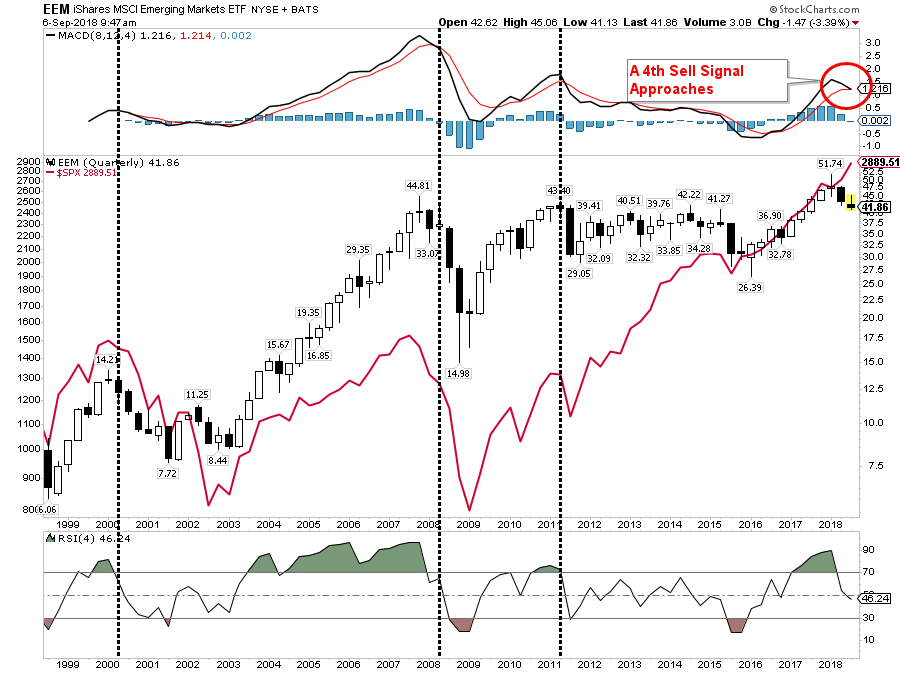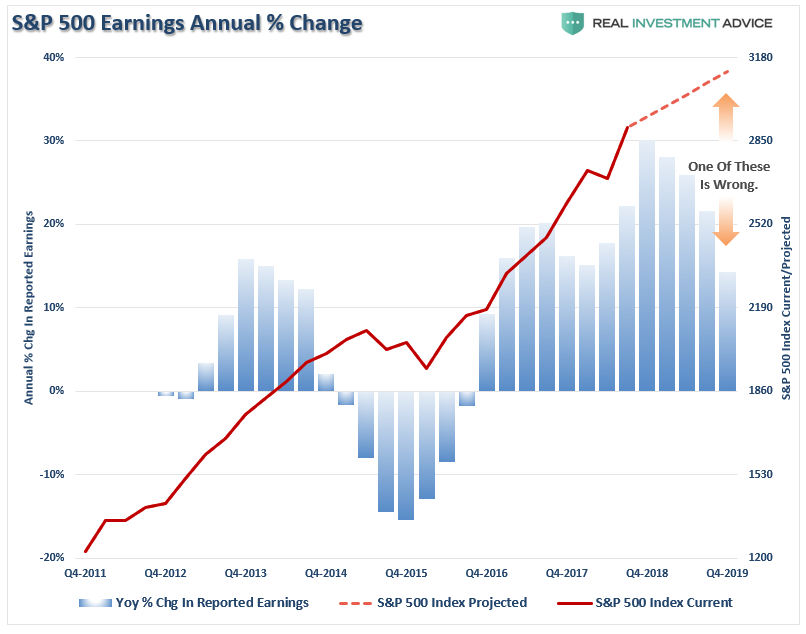By Lance Roberts, Real Investment Advice
Doug Kass made an interesting observation about the market yesterday:
“The month of September started with optimism.
That optimism has faded in the last two trading days.
The most notable winners (year to date), FANG, have been particularly weak as investors begin to understand (thanks to the Congressional testimony and hearings) that the component companies’ costs will balloon in order to deliver a product that is palatable to the U.S. government and other authorities – something I have been suggesting for a while. As noted yesterday, many other former market leaders are also falling back in price.
While there has been some rotation (there always is), there have been no notable winning sectors (save the speculative marijuana space).
Meanwhile, over there, the European banks are making new lows as the European bourses dramatically underperform and diverge from the S&P Index. And China’s stock market is moving swiftly into bear market territory.
I continue to believe that we are in an ‘Acne Market’ in which Mr. Market’s complexion is changing for the worse.
Economically, global high-frequency data is growing ambiguous.
In terms of sentiment, investors seem unduly complacent in their optimism and I know no strategists who are even contemplating the possibility of a large market drawdown.
The bottom line is that the economic, policy (trade, etc.), political (midterm elections are only two months away), currency and geopolitical outcomes are numerous and growing: Many of those outcomes are market adverse.
Over the last few years, it has paid to buy the dip.
It might be different this time as a maturing economy and stock market are showing their rough edges – just when global monetary authorities are pivoting and many non-US fiat currencies are imploding.”
I addressed last week, that emerging markets are likely sending a signal which is being largely dismissed by mainstream analysis. At the end of September, unless things markedly improve over the next 3-weeks, emerging markets will trigger the 4th major “sell” signal in the last 20-years.

“In 2000, 2007 and 2012, emerging markets warned of an impending recessionary drag in the U.S. (While 2012 wasn’t recognized as a recession, there were many economic similarities to one.)”
Currently, there is a high degree of complacency among investors, and Wall Street, the current bull market advance will continue uninterrupted into 2019. Targets are already being set for the S&P 500 to hit 3200, 3300, and higher.
While anything is certainly a possibility, it doesn’t mean that such will occur in a straight line either. The lack of leadership from the technology sector is certainly concerning given its extremely heavy weighting to the overall index. But likewise, the lack of performance from international markets also suggest “something isn’t quite right.”
This also shows up in the Baltic Dry Index which is just a representation of the demand to ship dry goods. While the index bounced from the lows in 2016, as global central banks infused massive amounts of liquidity into the system, early indications suggest that the cycle of global growth has started to wane.

The biggest concern domestically remains the strength of earnings growth going forward as well. Currently, estimates remain extremely high and the drag from a stronger dollar, tariffs, and rising rates will likely bring estimates lower. As I noted last week:
“But looking forward, year over year comparisons are going to become markedly more troublesome even as expectations for the S&P 500 index continues to rise.”

While I am certainly hopeful the analysts are correct, as bull markets are much easier to navigate, the risk of disappointment is rising. As Doug notes, the contraction of monetary policy is beginning to take effect on the markets and the economy.
Risks are always under-appreciated when bullish enthusiasm prevails. But knowing when to “fall back” and regroup has always been a better strategy than fighting to the last man.
Just something to think about as you catch up on your weekend reading list.
Economy & Fed
Markets
Most Read On RIA
Research / Interesting Reads
To access the original article, click here.






